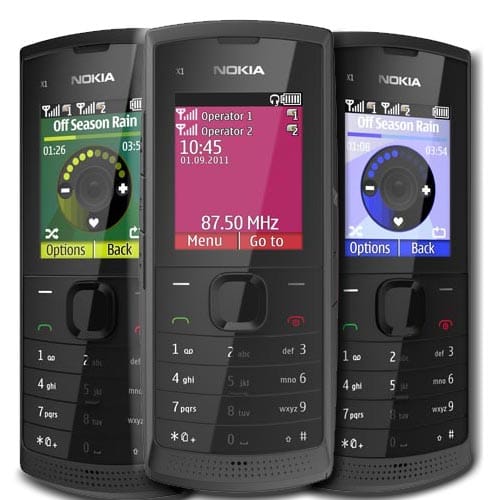Nokia India: Exemplary understanding of a unique market.

Nokia CEO Stephen Elop spent a week here at the beginning of September, during which he described India as being at the forefront of transition within the company. For all those in the West who have been writing them off for the last couple of years it is worth remembering that Nokia has an installed base of devices in India, that is roughly equivalent to the entire mobile subscriber base of the USA. The base of S40 feature phones alone is in excess of 200 million. Given that the Ovi store here is now doing 8 million downloads every week and climbing, you can see why Elop made this statement, and why I met a very buoyant developer relations team for a conversation to explore this further.
Mobile Industry Review is held in high regard by Nokia so they were kind enough to bring the key members of the Forum Nokia India team together in their Delhi office to talk to me. I met with…
Sunil Rao, Head: Forum Nokia India.
Priyam Bose, Developer Relations Manager
Simran Singh Sethi, Communications Specialist.
I was rather expecting quite a formal Q & A session and had prepped a few questions. As it turned out, these chaps were very relaxed, displaying the natural warmth and friendliness I am getting used to here.
I began by asking them, what the transition has meant to them in real terms. Forum Nokia has 200,000 registered Symbian developers here. Over the recent months this team has delivered conferences and training all over India in developing for Windows Phone 7. Along with the skills necessary for writing and testing apps, they brought in top flight Silverlight UI design specialists to really get the devs here up to speed on delivering a really well executed user experience. I expect we’ll see a flurry of new WP7 apps arriving in Microsoft’s market place in the early part of next year. The message from Nokia here is. Our development platforms and runtimes have consolidated to S40, Qt, and WP7. This gives developers a clear view of what they need to do to service Nokia’s huge base here.
In recent months, Nokia have released their first four dual SIM capable devices. They are very popular here as they allow family groups and friends to share a device between them, and users to switch between providers on the fly to get the best deal for their current location, time of day etc. Anyone who has a examined the legacy dual SIM devices, which range from imported iPhone clones to the very successful Micromax range of devices, will see that the reality of using them can be troublesome. Software in these is traditionally some Java variant prone to freezing and crashing when changing network, and woe betide you if you expect it to remember an APN setting for the mobile web.
Nokia have done their homework here. The devices can store all the details of up to 5 SIM cards, and best of all, hot swap these SIMs with no need to restart the phone. Add to this a feature set including, Nokia Maps, FM Radio, and a new browser which works in a similar way to Opera mobile compressing data to work at a decent speed over GPRS. They have a dedicated music phone in the X1-01 with the loudest clearest speakers to date and up to to 32GB of micro SD storage. The C2 range has two touch enabled models which will go a long way to delivering Nokia’s stated aim of connecting the next billion users of the internet.
Independently other mobile experts I have been talking to have told me these devices are now so far ahead of the competition, there is a huge resurgence in sales, building on the high trust factor Nokia have established over the years in India. Price wise they come in at between £30 to £80 making them competitive with the myriad of Chinese and Indian devices available. When you add the pre-installed Nokia Life Tools and a new range of games and entertainment apps they ship with, it’s a very compelling offer.
Nokia as a company have strong environmental credentials. I saw an inspiring presentation and an installation from them at this years MLove festival in Germany a couple of months ago. I asked for some examples of how they are delivering these aims in India. Having encouraged development for several localised apps and games on the theme of environmental awareness, these are now getting a lot of traction in the Ovi Store. WWF Eco Guru, G Aura, Green Plaza, Climate Mission, and Battery Extender are great examples.
The Nokia Take Back programme is a nation wide recycling initiative in India. So far they have recycled over 1.5 million old mobile phones and chargers via the collection points. A very worthy addition to this programme is that they are now promising to plant a tree in exchange for every item brought in to them. This may turn out to be quite an investment with the rate the mobile industry is expanding here. Nokia are also committed to green manufacturing processes. At their plant in Chennai which produces 300,000 devices every day, they have made significant progress over the last few years in reducing their carbon usage. Wide ranging measures including sourcing a wide range of recycled material and reducing packaging have made a big overall impact.
Our obsession with high end smarphones in the west allows very little attention to how companies like Nokia work in the developing world. The level of corporate responsibility they display is exemplary, I challenge anyone to show me a US or Chinese based company that can get close to them in this respect.



